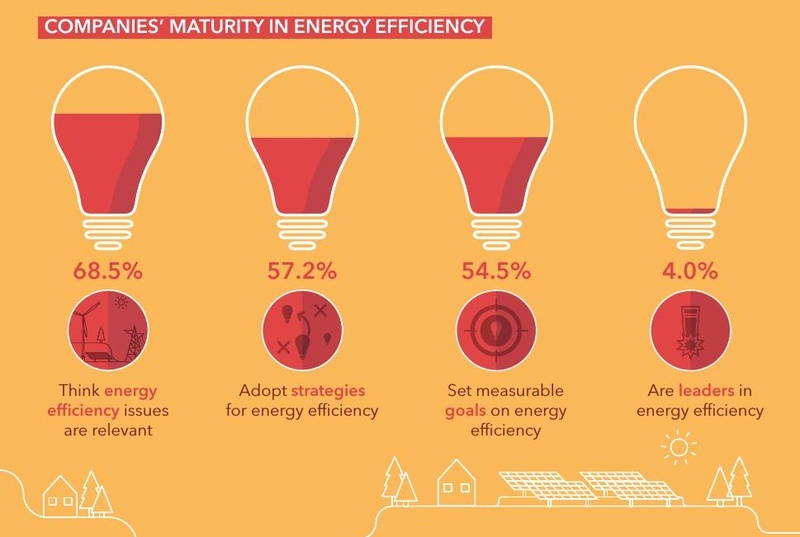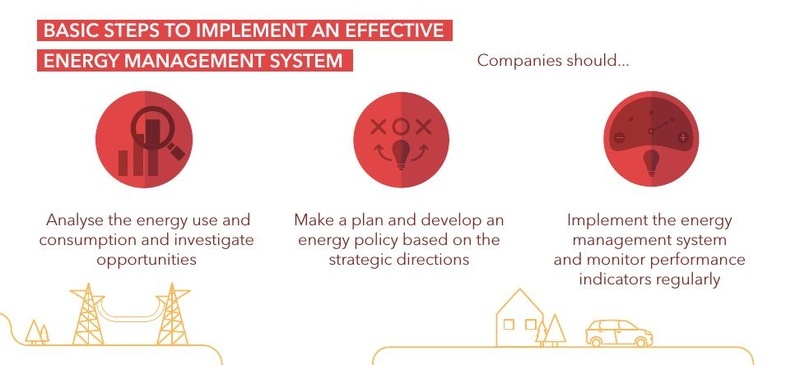News Release from windfair.net
Wind Industry Profile of
Report Excerpt - Energy efficiency: Companies driven by cost control, but holistic strategy lacking

Driven by cost control, companies are committed to energy efficiency but most are only scratching the surface, not tapping into their full potential. These findings emerge from an international survey conducted by DNV GL - Business Assurance, a world leader among certification bodies, and the research institute GFK Eurisko, on more than 1,577 professionals from businesses in different sectors in Europe, the Americas and Asia.
ENERGY EFFICIENCY MANAGEMENT
Energy efficiency is a key topic: not only at a personal (77%) and societal (81%) level but from a business perspective too (69%). 57% of the companies surveyed have an energy efficiency strategy and 55% set measurable goals, with percentages around 10 points higher for businesses belonging to the energy intensive sectors.
However, energy efficiency is still a generic ambition, with goals mainly set at company level (37%). Very few set concrete targets on activities, even among energy intensive firms.

COSTS DRIVE SUSTAINABILITY
67% of the companies have invested in energy efficiency initiatives during the last three years. Costs are driving sustainability: 46% stated that they invested in energy efficiency measures in order to obtain more efficient tools, or to reduce energy consumption and costs. Companies are making concrete efforts in order to optimize their energy management, but without a long-term view. Only 26% have an energy management plan. More sophisticated initiatives such as staff training (21%), having energy managers (20%) or performing audits and assessments (20%), play a minor role.
A clear strategy and a systematic approach are lacking: less than half of the companies that have undertaken efficiency activities are able to quantify the energy savings obtained.

MAIN OBSTACLES AND MAIN BENEFITS
Management awareness is not a problem; it was mentioned by only 18% of the companies. Economic constraints are the main obstacles preventing companies from making more progress: other priorities (36%), expensive implementation (33%), lack of returns (25%) and focus on short term results (24%) top the list.
A systematic approach would help firms make the right decisions and get a proper return on their investments. However, the benefits are already perceived as exceeding the costs (59%), especially in terms of savings (54%).
FUTURE OUTLOOK
Looking ahead, companies are expected to increase their commitment to energy efficiency by taking a more mature approach. Activities related to cost and consumption reduction will remain the most common actions, but there will also be significant increases in more strategic actions like staff training (+13% compared with the present time), identification of energy savings potentials (+8%) and preparation of energy management plans (+7%).
Luca Crisciotti, CEO of DNV GL - Business Assurance commented: “The majority of companies are unfortunately not taking a holistic approach. We see that energy efficiency is not being applied at all organizational levels in businesses. Organizations are also mainly focusing on reducing costs and consumption – which is good of course - but they lack a well-rounded approach that would enable them to tap the full potential of energy management.
Establishing an energy management system would help them to define a strategy and to translate it into action. Facing energy efficiency issues at operational level only is not enough.”

METHODOLOGY AND SURVEY SAMPLE
- The survey was conducted in April 2015, on a sample of 1,577 professionals who work at prominent companies in the primary, secondary and tertiary sectors across different industries in Europe, The Americas and Asia.
- The sample consists of DNV GL customers and is not statistically representative of worldwide companies:< >22% of the firms involved employ less than 50 people, 35% from 50 to 249 and 43% 250 or more; 4% of the companies are from the primary sector, 54% from the secondary sector and 42% from the tertiary sector.
- 18 % of companies belong to energy intensive sectors:
mining and quarrying; electricity, gas and water supply; manufacturing of wood and of products of wood and cork, except furniture; manufacturing of articles of straw and plaiting materials; manufacturing of pulp, paper and paper products; publishing, printing and reproduction of recorded media; manufacturing of coke, refined petroleum products and nuclear fuel; manufacturing of chemicals and chemical products; manufacturing of rubber and plastic products; manufacturing of other non-metallic mineral products; manufacturing of basic metals; recycling. - The sample includes 67 companies defined as “leaders”.
The classification of a company in the leaders category is based on a set of requisites specifically defined by DNV GL: having an energy efficiency strategy; setting measurable goals on energy efficiency; setting reduction goals at company level, facility level and area level; having invested in energy efficiency initiatives in the last three years; quantifying the amount of energy savings from these initiatives; being able to rate the overall cost/benefit ratio of the actions undertaken. More information is available in the report. - The questionnaire was administered using the CAWI (Computer Assisted Web Interviewing) methodology.
- Source:
- DNV GL
- Link:
- www.dnvgl.com/...

